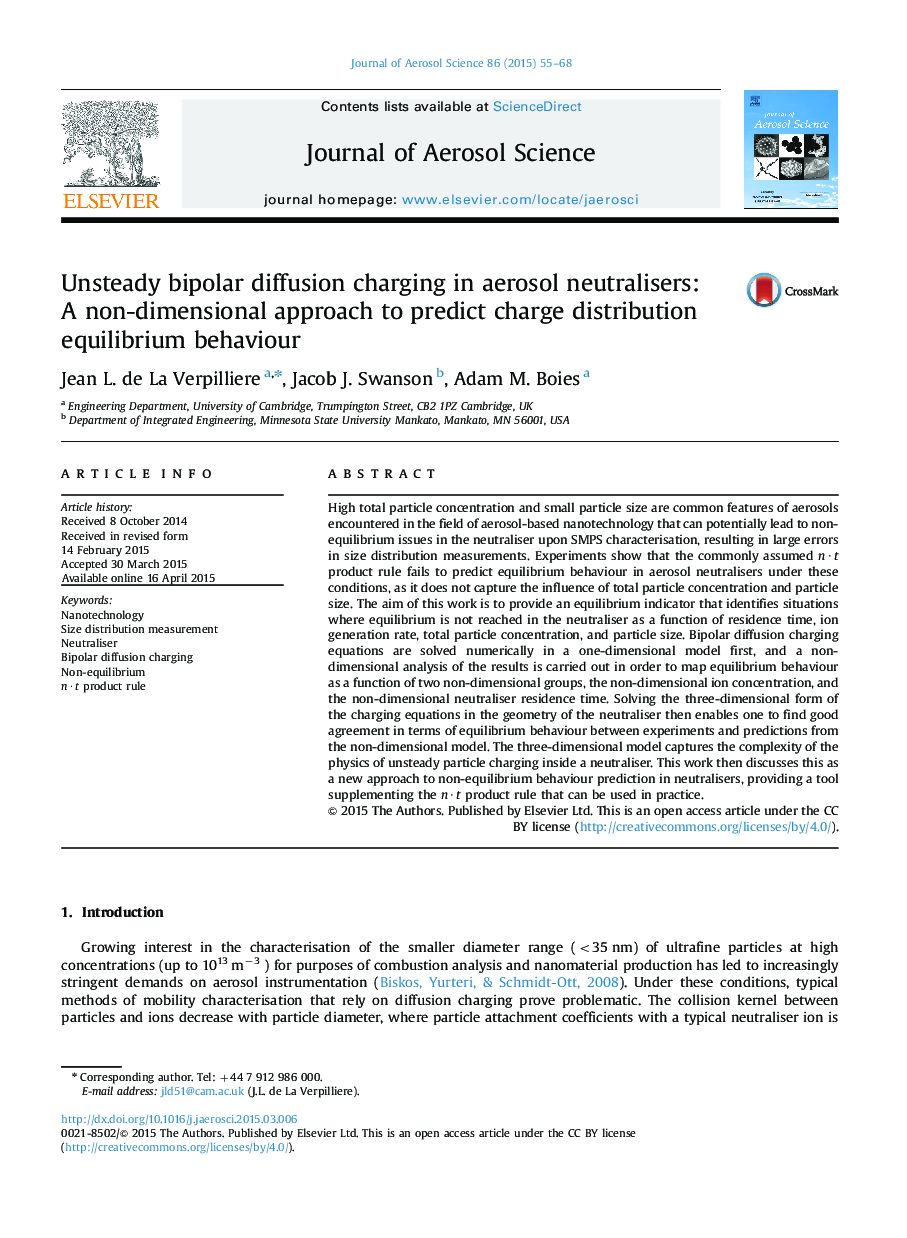| Article ID | Journal | Published Year | Pages | File Type |
|---|---|---|---|---|
| 6344458 | Journal of Aerosol Science | 2015 | 14 Pages |
â¢n·t product rule fails at high particle concentration or low particle size.â¢Equilibrium behaviour is mapped as a function of two non-dimensional groups.â¢Relevant groups are the ND ion concentration, and the ND neutraliser residence time.â¢A 3D model captures the physics of unsteady particle charging inside a neutraliser.â¢A new tool supplementing the n·t product rule is proposed for practical use.
High total particle concentration and small particle size are common features of aerosols encountered in the field of aerosol-based nanotechnology that can potentially lead to non-equilibrium issues in the neutraliser upon SMPS characterisation, resulting in large errors in size distribution measurements. Experiments show that the commonly assumed nâ t product rule fails to predict equilibrium behaviour in aerosol neutralisers under these conditions, as it does not capture the influence of total particle concentration and particle size. The aim of this work is to provide an equilibrium indicator that identifies situations where equilibrium is not reached in the neutraliser as a function of residence time, ion generation rate, total particle concentration, and particle size. Bipolar diffusion charging equations are solved numerically in a one-dimensional model first, and a non-dimensional analysis of the results is carried out in order to map equilibrium behaviour as a function of two non-dimensional groups, the non-dimensional ion concentration, and the non-dimensional neutraliser residence time. Solving the three-dimensional form of the charging equations in the geometry of the neutraliser then enables one to find good agreement in terms of equilibrium behaviour between experiments and predictions from the non-dimensional model. The three-dimensional model captures the complexity of the physics of unsteady particle charging inside a neutraliser. This work then discusses this as a new approach to non-equilibrium behaviour prediction in neutralisers, providing a tool supplementing the nâ t product rule that can be used in practice.
